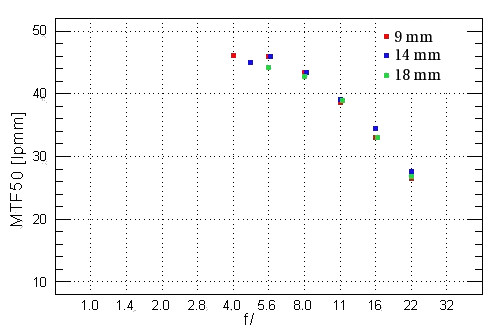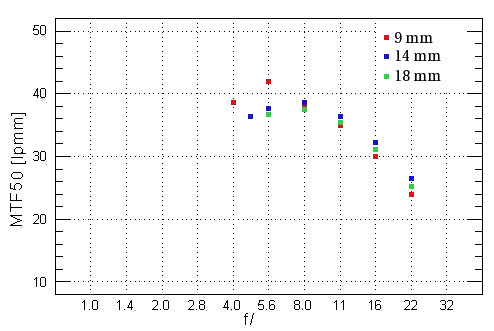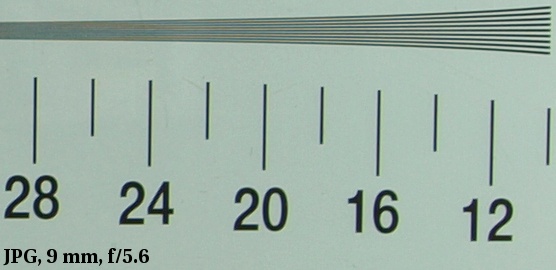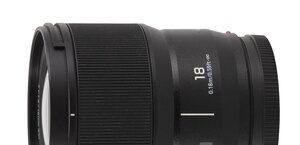Olympus Zuiko Digital 9-18 mm f/4-5.6 ED
4. Image resolution

First the advantages. One big plus of the lens is high consistency across the frame at all focal lengths. The second one is maximum aperture results, which are often the maximum results for the given focal length and keep the high level all the time. Are there any disadvantages? I must admit it’s a lens difficult to fault, although it makes us feel a bit unsatisfied when we compare it, e.g. with a ZD 11-22 mm. That lens could, by f/4.0-5.6 reach the outstanding level of 48-49 lpmm whereas a ZD 9-18 mm reaches “only” 46 lpmm. Clearly, it is because of ZD 9-18 mm’s mediocre light. If the maximum aperture is by f/4.0-5.6 the lens has no room to improve; stopping down makes the optics work better but increases the diffraction. A faster lens like ZD 11-22 mm doesn’t have such problems – it gives worse results at maximum aperture but it has more room to improve while stopping down.
Please Support UsIf you enjoy our reviews and articles, and you want us to continue our work please, support our website by donating through PayPal. The funds are going to be used for paying our editorial team, renting servers, and equipping our testing studio; only that way we will be able to continue providing you interesting content for free. |
- - - - - - - - - - - - - - - - - - - - - - - - - - - - - - - - - - - - - - - - - - - - - - - -
On the other hand, when we consider the fact that ZD 9-18 mm is just complementary to ZD 14-54 mm, the situation of the tested lens is very good. On 14 mm focal length the first lens fares a bit better, giving us the expected result – a very good wide angle quality.
The next picture shows us the frame corner results.

Once again, we are impressed by high consistency and a very good sharpness level at maximum aperture. Here, the lens shows its true caliber because even the faster ZD 11-22 mm, with the aperture closed by one stop, performs a bit worse or just on the same level.
One thing is worth notice. The Olympus ZD 9-18 mm draws extensively on the experience and advantages of the Four Thirds system. It shows us something, that cannot be achieved on bigger APS-C/DX detectors or full frame. None of the ultra-wideangle lenses with the field of view of about 100 degrees tested on matrixes bigger than 4/3 had such good frame corner results. It should be considered seriously, taking into account the full frame fashion fast returning. Full frame is an efficient way to escape from the mega pixels race but it also means the return to the most serious problem of poor wide frame corner quality of pictures.
We traditionally finish the chapter with the excerpts of our test chart, based on JPEG files saved along with RAW files.







